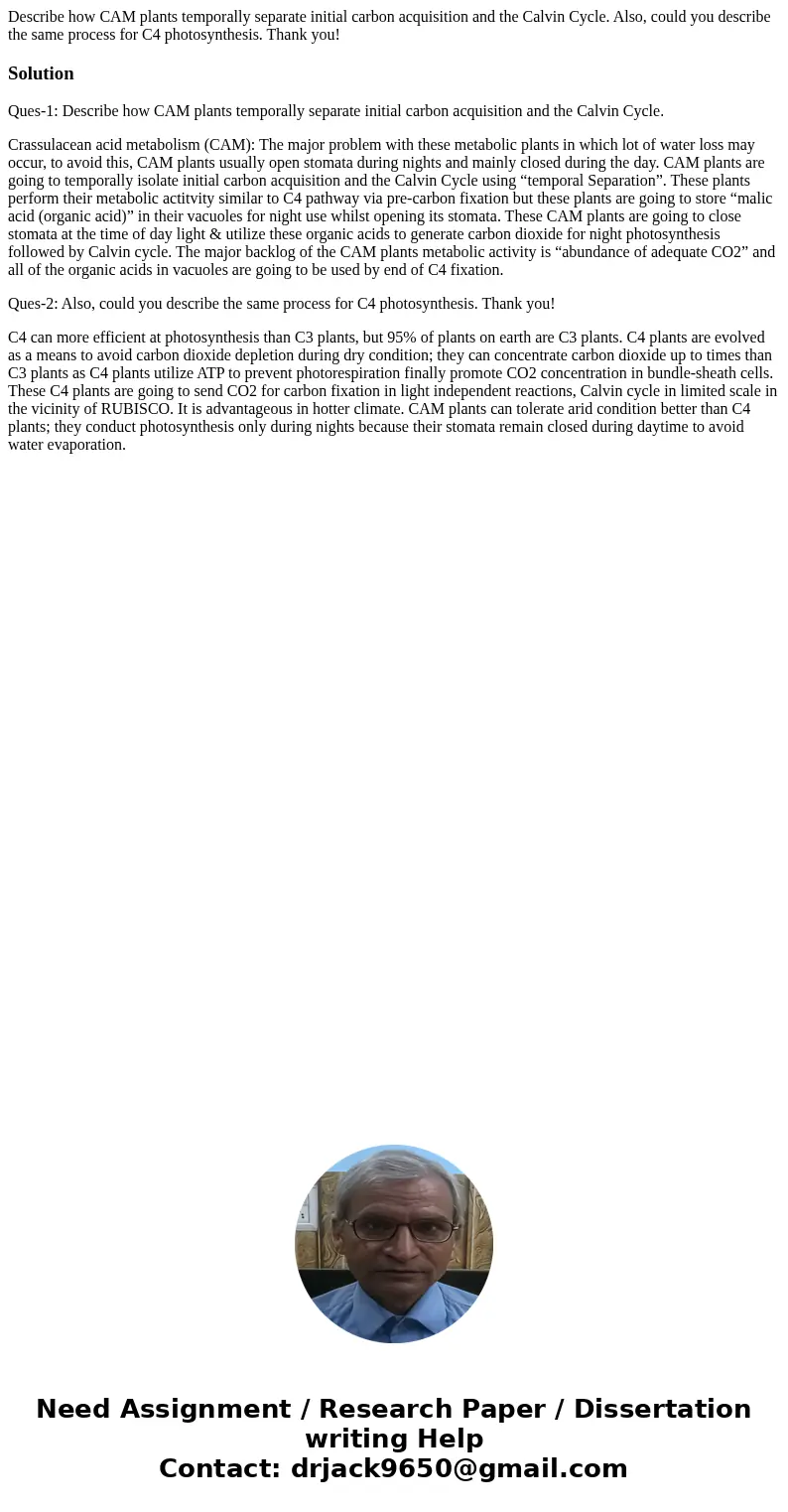Describe how CAM plants temporally separate initial carbon a
Describe how CAM plants temporally separate initial carbon acquisition and the Calvin Cycle. Also, could you describe the same process for C4 photosynthesis. Thank you!
Solution
Ques-1: Describe how CAM plants temporally separate initial carbon acquisition and the Calvin Cycle.
Crassulacean acid metabolism (CAM): The major problem with these metabolic plants in which lot of water loss may occur, to avoid this, CAM plants usually open stomata during nights and mainly closed during the day. CAM plants are going to temporally isolate initial carbon acquisition and the Calvin Cycle using “temporal Separation”. These plants perform their metabolic actitvity similar to C4 pathway via pre-carbon fixation but these plants are going to store “malic acid (organic acid)” in their vacuoles for night use whilst opening its stomata. These CAM plants are going to close stomata at the time of day light & utilize these organic acids to generate carbon dioxide for night photosynthesis followed by Calvin cycle. The major backlog of the CAM plants metabolic activity is “abundance of adequate CO2” and all of the organic acids in vacuoles are going to be used by end of C4 fixation.
Ques-2: Also, could you describe the same process for C4 photosynthesis. Thank you!
C4 can more efficient at photosynthesis than C3 plants, but 95% of plants on earth are C3 plants. C4 plants are evolved as a means to avoid carbon dioxide depletion during dry condition; they can concentrate carbon dioxide up to times than C3 plants as C4 plants utilize ATP to prevent photorespiration finally promote CO2 concentration in bundle-sheath cells. These C4 plants are going to send CO2 for carbon fixation in light independent reactions, Calvin cycle in limited scale in the vicinity of RUBISCO. It is advantageous in hotter climate. CAM plants can tolerate arid condition better than C4 plants; they conduct photosynthesis only during nights because their stomata remain closed during daytime to avoid water evaporation.

 Homework Sourse
Homework Sourse